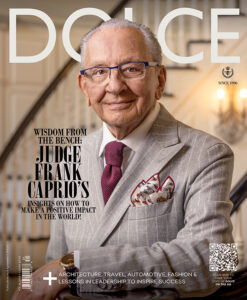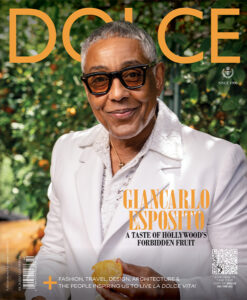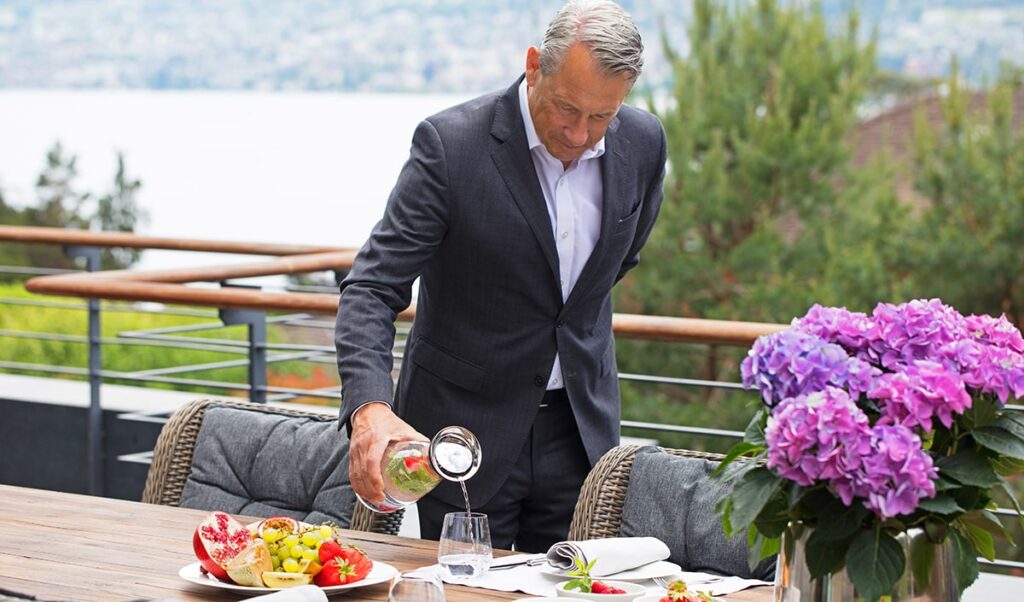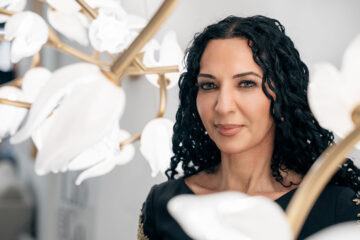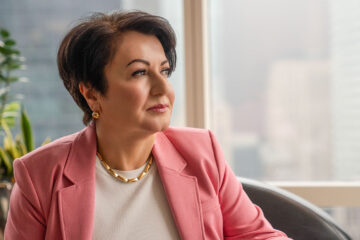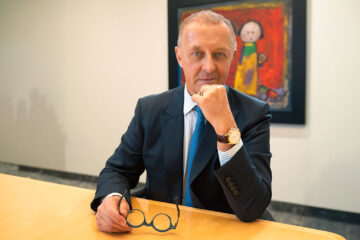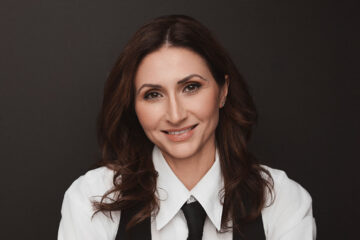The Ultimate Swiss Retreat
A look inside the ultra-private Swiss luxury treatment centre specializing in highly personalized anti-aging and longevity programs.
The hallmark of Swiss watches are their precision and durability. They are built to last generations. Humans, of course, are not blessed with the same qualities. Indeed, a number of recent studies have shown that markers for burnout, particularly among professionals, are at record highs. Thankfully, the services and treatments offered by the Kusnacht Practice — a treatment facility located an hour’s drive from the Swiss Alps — combine Swiss standards of excellence with state-of-the-art medical practices with the goal of providing clients an opportunity to holistically rebalance and restore their minds, bodies and souls. In the discreet privacy of five-star villas, clients may be treated for a wide range of physical and emotional issues, or can check in to receive the Kusnacht Practice’s renowned Biomolecular Restoration treatment, a program designed to restore the body and brain’s metabolic health and boost rejuvenation for the long term. Sound good? We caught up with Dr. László Ürögi and Dr. Antoinette Sarasin Gianduzzo to learn more about the Kusnacht Practice.
Q: What is the overall approach at The Kusnacht Practice?
Dr. Ürögi: The overall approach is that we are looking for individual answers. We are executing from a holistic perspective. That means we take the issues that our clients present — they can be somatic issues, mental issues or a combination of these two — and we try to understand them from several angles.
We are a very complex team — we have specialists in internal medicine, psychiatry, biomolecular restoration, addiction, and so on. We try to understand what is actually happening with the individual. Then we come up with a realistic plan with the clients. We understand the human being as complex and we address all the issues at the same time, and do not divide mind, body and soul.
Q: Can you give an insight into your patients/clients and how the type of patient has changed over time?
Dr. Gianduzzo: The profiles of clients have changed a little bit with time. In the very beginning, it was exclusively addicts — so addiction, substance abuse — not even psychiatric disorders like bipolar disorder or schizophrenia, but substance abuse with underlying causes. Then we developed a more solid psychiatric team to treat clients with very complex psychiatric disorders. Now, we have developed further to maintain health and vitality in the sense of longevity. Some clients are healthy, more or less, but are interested in analyzing their complex biochemistry to see if it is going in the direction of keeping up their health or if there are metabolic stress factors, which are the origin of pathways of disease. Most diseases develop over 5, 10, 15 years.
Q: It’s known that many CEOs and high-level executives experience burnout. What is your experience with burnout clients?
Dr. Ürögi: We have clients who are high achievers — because, naturally, to get these kinds of services they have to have the right financial background — and so we see this slice of the cake. Our clients who are CEOs or heads of big enterprises are even over-represented, because this really is a segment only of ultra-high-net-worth people.
If we’re talking about burnout, it’s always an occupational phenomenon. It’s this long-term stress that you experience at your workplace. High achievers are really vulnerable because they are running the extra mile. They get bored easily, so they are always looking for new challenges. They want new stimulation. They sometimes don’t know their boundaries — they just go full speed forward. And also, now, through the COVID period, they were more distracted because they were at home, home-schooling with the children, and their spouse was home as well. They didn’t get that immediate feedback, what you would normally get when you’re physically in your work environment. So there’s a loss of direct rewards, and a genuine drop in confidence.
Very often what we see is that they are trying to self-medicate to get rid of all this discomfort or fatigue with substances, which leads to conditions where clients have an extra layer of suffering … When it comes to the treatment duration, we are already thinking about the period after discharge from day one. The length of stay can really vary, but if there’s a chronic condition like burnout, we can really only think in weeks, but better in months … Some people would just like to have an extra push, some guidance — some understanding, you know — checkups from our internal medical team, or a little support from the psychiatry team. And then they want to do things on their own or in their own country. Some people come here to pack as many tools as possible in their backpack, and they want to leave earlier. So there we try to look for a realistic plan. We also have hybrid models where our clients do not necessarily have to give up working completely, they have business hours built into their daily or weekly schedule. We are aiming to decrease the stress levels as much as possible, but we also have to be true to our mission, which is highly individualized therapy, and that means if someone has to work two hours a day, then we will make it happen. There’s no standard program — it’s always tailor-made.
Q: What have been some of the success stories you’ve experienced so far?
Dr. Ürögi: For me, the biggest success is when our clients feel they are in charge of their life, and they’re capable of maintaining healthy or healthier lifestyles, because it’s not always realistic to be completely healthy. Not all conditions are treatable. We face a lot of chronic illnesses or pathological behaviours and to completely change them or completely eradicate them is sometimes almost impossible. But still, the improvement in the quality of life is where we can measure the success of a treatment.
“Mindfulness Helps A Lot To Understand Where There Is Beauty In The World And Where There’s Sweetness In The World”
Sometimes we have to reset the focus or adjust the expectations, but in the end it comes down to how you can function, how independent you are, how resilient you are, how empowered you feel, and how much control you feel that you have over your life and over your health. We get plenty of good feedback. One of the biggest rewards for us is if clients are referring us to family members, acquaintances or friends. That’s when we know that we did the right job. These people have access to the best services in general and so you probably will not be able to impress them with a new watch or a new car. Investing in your life expectancy and health — this is what really is of value to them. One client said, “What is the purpose of having a Ferrari or a big boat if you aren’t able to benefit from it as long as possible?”
Q: What are some general health tips that you could give that everyone should follow for an optimized life?
Dr. Ürögi: Take your time. Before taking action, understand yourself, and understand your environment. Rather do less but continuously and with dedication than try everything without any passionate commitment. Rather do a 10-minute walk in the morning every day or three times a week than try to aim for a marathon or do 10 kilometres every time, because it might not be realistic. Find individual solutions, and for that, you have to have mindfulness and ability for selfreflection and see what kind of resources you have in you. “Sustainability” is the key word.
Dr. Gianduzzo: For any achievement, you want to do it in a sustainable way. Less is more, but on a consistent basis. Nowadays, there’s a certain tendency for perfectionism and clean food, and this is not healthy. There is always room for a little bit of unhealthiness. There is not a problem of having a little bit of unhealthy aspects in your life — we need that for our health. An important part of our program is taking into account the personal pleasure of our clients. You have to consider this as well as their environment.
Q: What does la dolce vita, the sweet life, mean to you?
Dr. Ürögi: My free association of the sweet life is mindfulness. For me, what immediately comes to my mind is how are we experiencing the world and how can we see or experience joy. I think that when I was young that was very natural, it was in my gut. I think that when we get older, it gets a bit more complex. There are so many distractions You have fewer and fewer moments when there’s pure joy. Maybe I’m a bit pessimistic here, but I’m just talking about me. I think it’s a personal question. So, for me, mindfulness helps a lot to understand where is the beauty in the world, and where’s the sweetness in the world — and where’s the beauty in myself as an individual or as a human being. Now I immediately have to think about mindfulness as a tool that I’m using to interpret myself and the world and get the sweetness out of it.
Dr. Gianduzzo: For me, the sweet life is associated with certain joy or happiness, feeling comfortable. I’m bringing it back to biochemistry, because happiness or feeling comfortable is linked to biochemistry. You can influence your biochemistry, and among the ways of doing so is mindfulness and yoga. These activities have a very positive influence on bringing up serotonin, our happiness. When we influence our biochemistry, and when we do it on a regular basis, even if it’s only 10 minutes a day, it affects our body, and the “sweet life” feeling is easier to achieve.
kusnachtpractice.com
@thekusnachtpractice
This interview has been edited for length and clarity.



